Uwa Basin Four Seasons Road
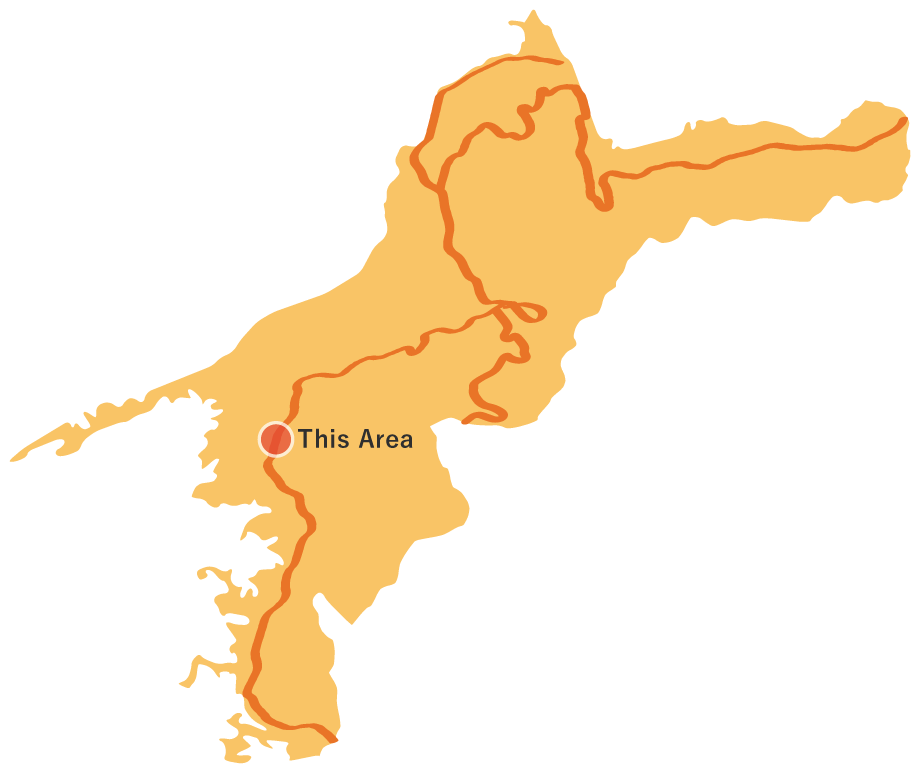
Uwa Basin Four Seasons Road
This 10.3 km long route starts from Kamiuwa Station on the JR Yosan Line. It heads towards the source of the Hijikawa River, which embodies Ehime Prefecture, and crosses the Tosakatoge Pass on the border of Ozu City. It goes north through the unique landscape of rice fields in Uwa Basin, one of the prefecture's leading grain-producing areas. Visitors can walk through and enjoy myriad expressions of spring, summer, autumn, and winter on this route. Further, a section (about 1.5 km from Seiyo City and 2.3 km from Ozu City) of this route called "Tosakatoge Pass" is still in relatively good condition, and it has been designated as a National Historical Site called "Iyo Pilgrimage Route, Daihoji Temple Route." The Tosakatoge Pass has a route that goes through this ancient path and a national highway. Please be careful when you cross the highway.
Uwa Basin Four Seasons Road(10.3km)

 Spots to photograph
Spots to photograph
If you wish to receive a certificate, please take a photo that includes yourself at the designated photo point for each course.
Nearby sightseeing spots

-
1
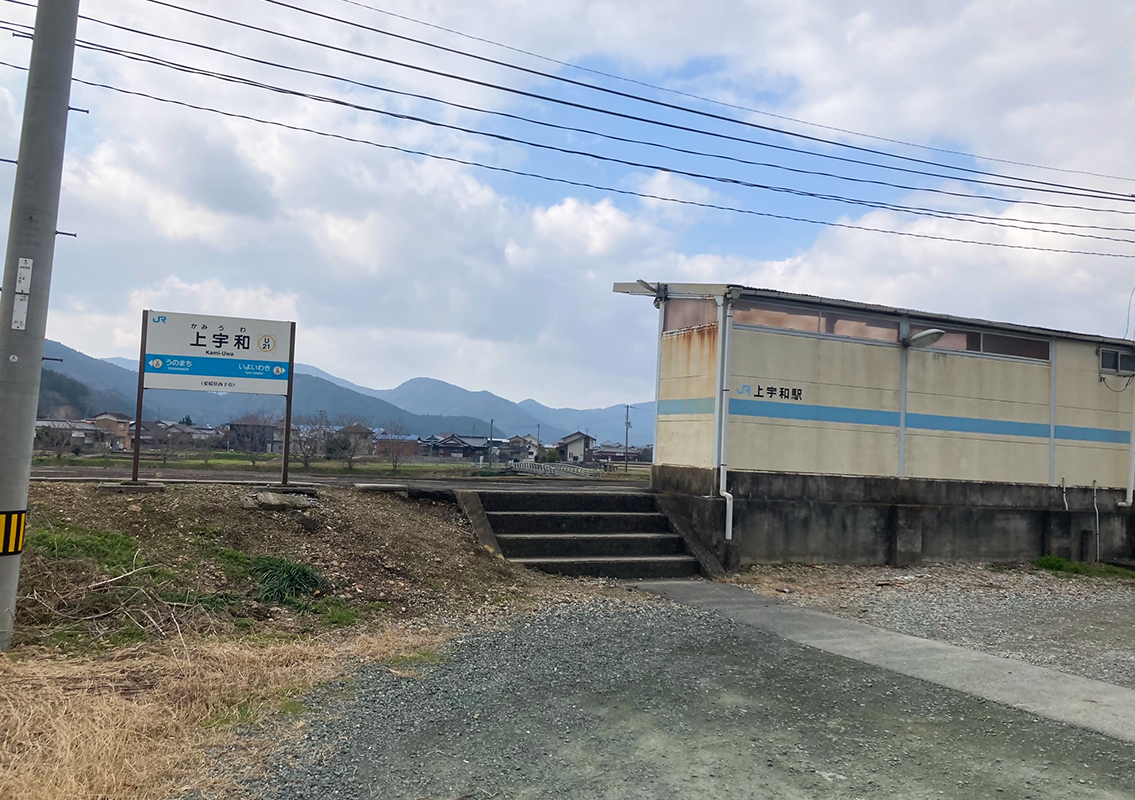 Starting point: Kamiuwa Station
Starting point: Kamiuwa StationThis will be your starting point. Proceed north, parallel to National Highway 56 and the Hiji River, towards the Tosakatoge Pass. You can also get here by JR as a limited express train stops at the Unomachi Station, the station next to Kamiuwa Station, about once an hour.
-
2
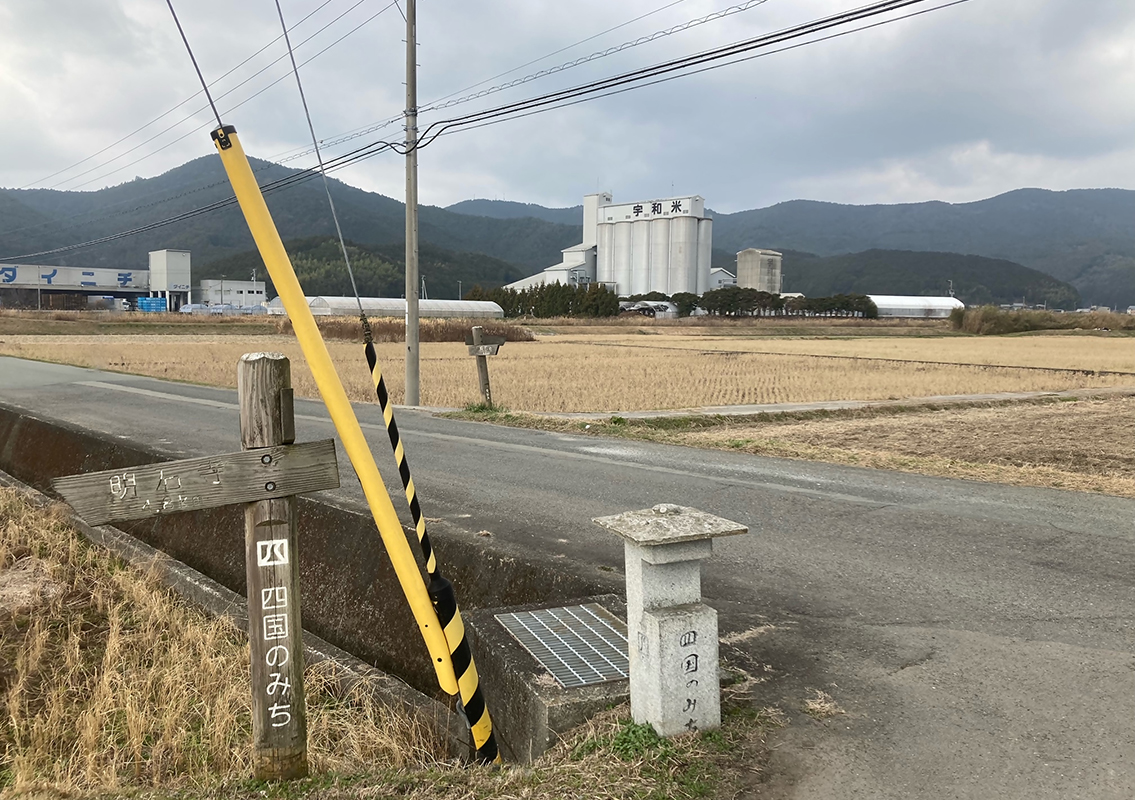 Grain elevator
Grain elevatorThis building represents the Uwa Basin, a rice-growing region and a leading farming belt in the Prefecture. Continue for a while through the peaceful countryside while viewing the grain elevator. You will see a carpet of Chinese milkvetch flowers in spring and ears of rice in summer.
-
3
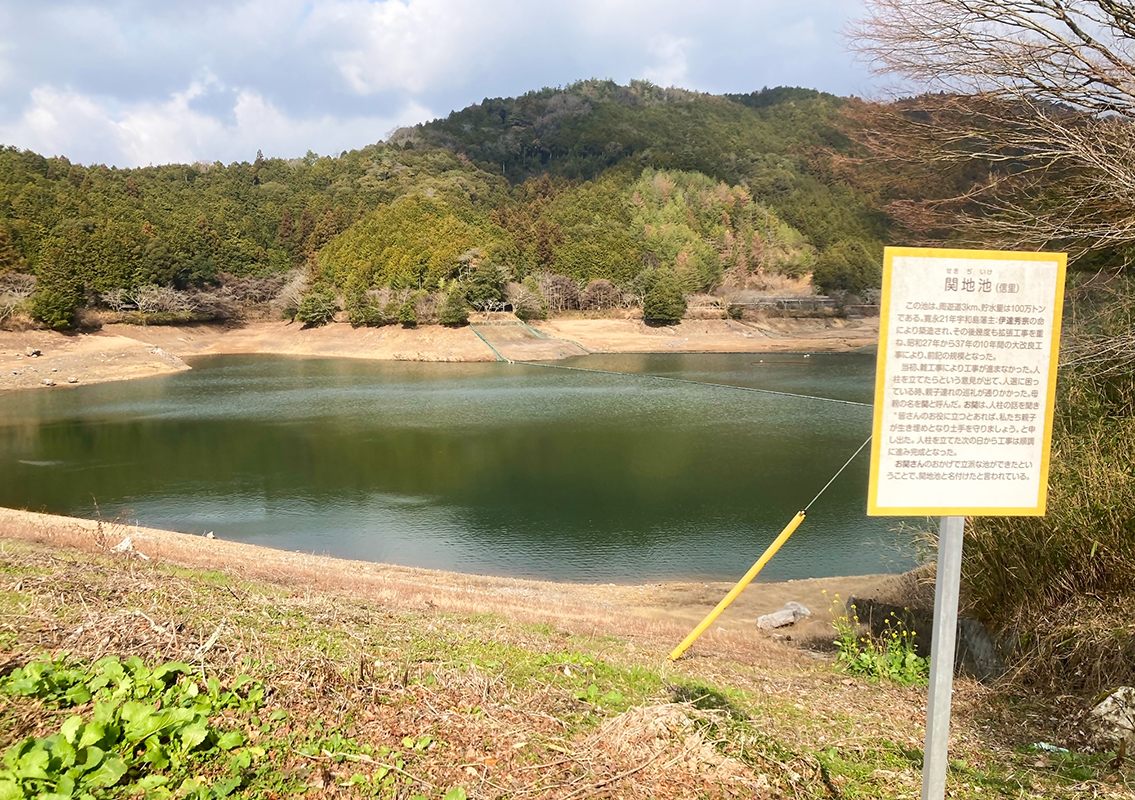 Sekijiike
SekijiikeThis is a little off-track from the Shikokunomichi (Shikoku Trails), but the Sekiji Pond is a reservoir with a circumference of approximately 2.4 km and boasts a water volume of 1 million tons. It was built in Kanei 21(1644) and expanded to its current size in Showa 37 (1962). About 500 Sakura (cherry blossom) trees bloom around the pond in spring, and the Sakura festival is held around April.
-
4
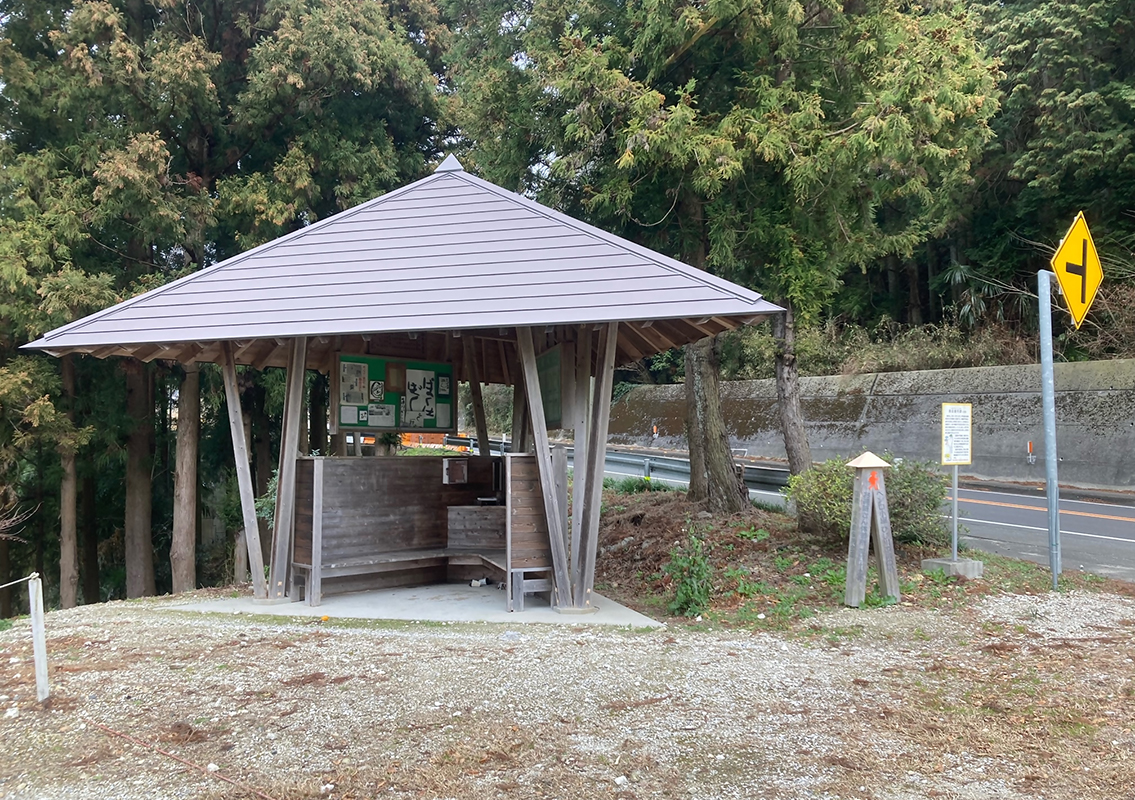 Rest Area for Pilgrims
Rest Area for PilgrimsThere is a pavilion here. From this point, two trails head towards Ozu: a mountain trail that crosses Tosakatoge Pass, and a route that follows National Highway 56 Tosaka Tunnel. Going through the tunnel which is 1,117 meters long shortens the distance and you will reach about 30 minutes faster. However, there are no walkways in the tunnel and many cars pass through at very high speeds, so please be very careful and make sure that you bring a flashlight or other such device when going through the tunnel.
-
5
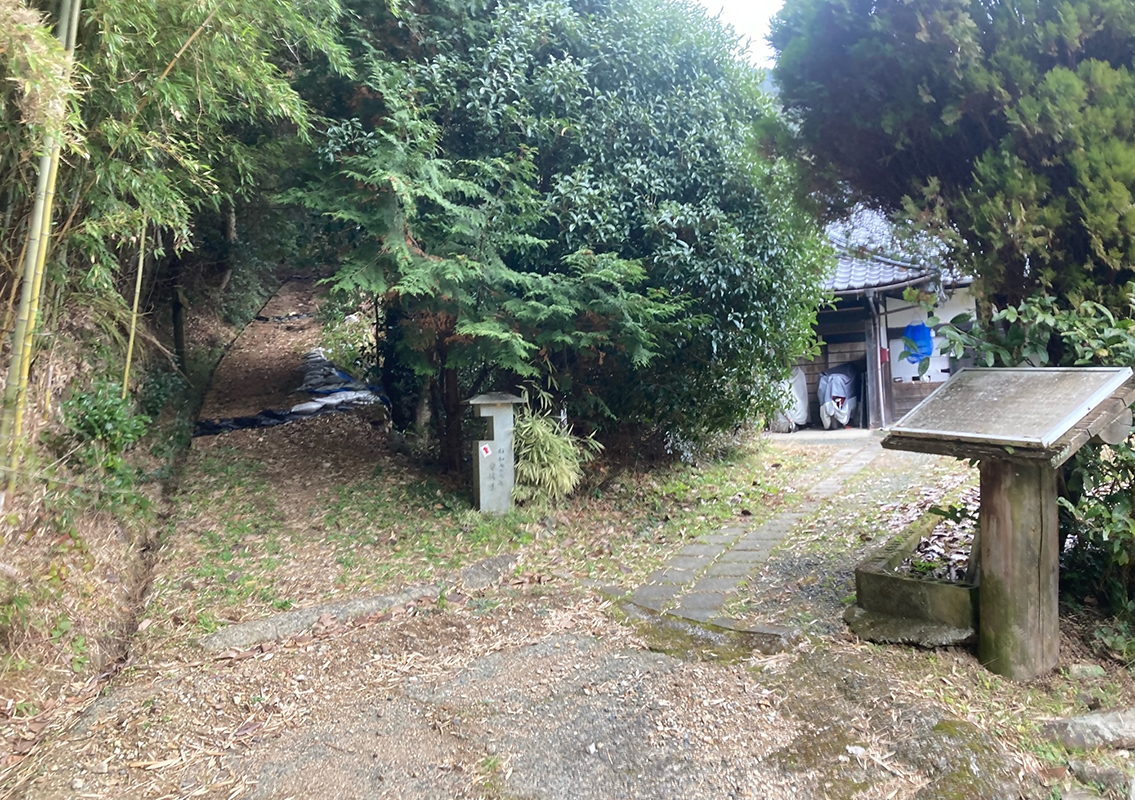 Ozu-han Torisaka Entrance
Ozu-han Torisaka EntranceFormer Border Checkpoint House
For 30 years from the Tenpo era (1830 to 44) to the beginning of the Meiji era, this was the location of the Ozu-han Torisaka Entrance Border Check Point House, and, to prevent the illegal outflow of people and goods, Ozu-han built the Torisaka Entrance Border Check Point House at this location, which was a strategic point on the Uwajima Highway. At that time, travelers were subject to strict regulations when passing through the Torisaka Entrance Border Check Point House, but pilgrims were able to pass through with relative ease. -
6
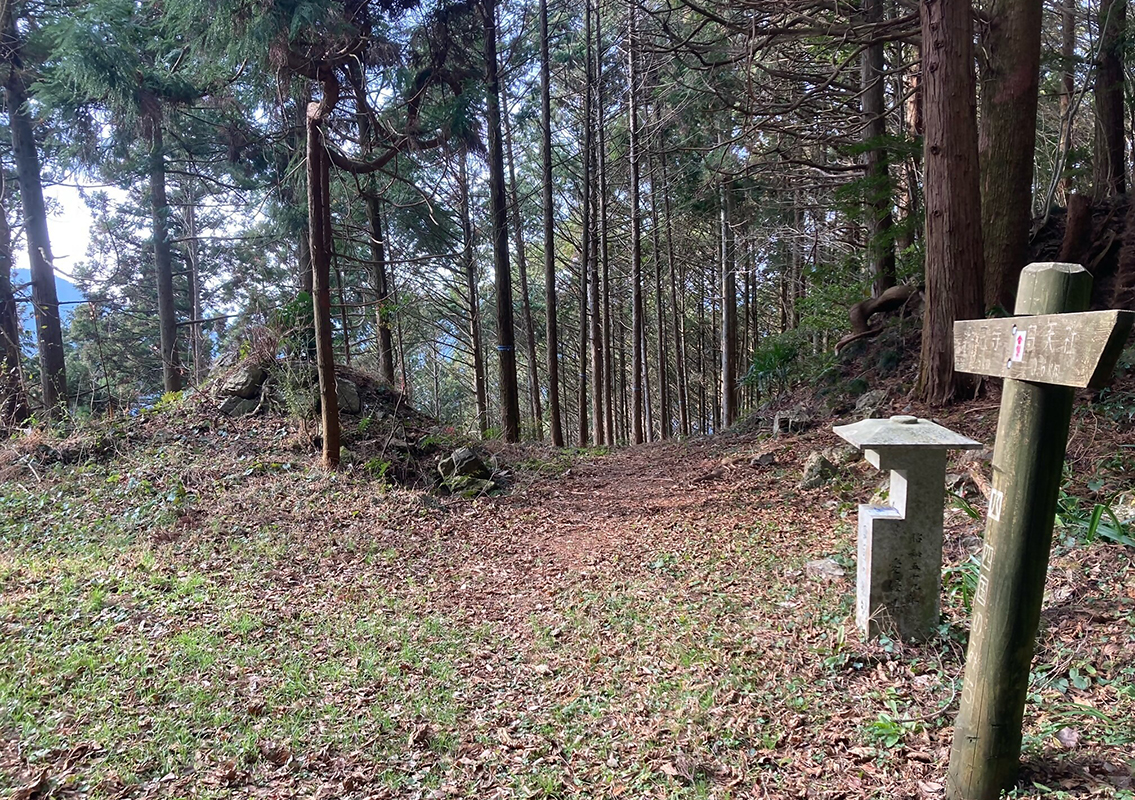 Tosakatoge Pass
Tosakatoge PassTosakatoge Pass is a mountain pass at an altitude of 470 m located on the border between Seiyo City and Ozu City, and the altitude difference between it and the ruins of the Ozu-han Torisaka Entrance Former Border Checkpoint House is approximately 200 m. This is a pilgrimage road (Shikokunomichi (Shikoku Trails)) and also served as the main road connecting the Uwajima and Ozu domains, and was a key transportation point used by the Uwajima feudal lords for their alternate attendances. On this pass, there are three stone Buddha statues. The stone Buddha in the center is engraved with the words "Statue of Fugen Enmeiji - Security for the nation, peach for the world."
-
7
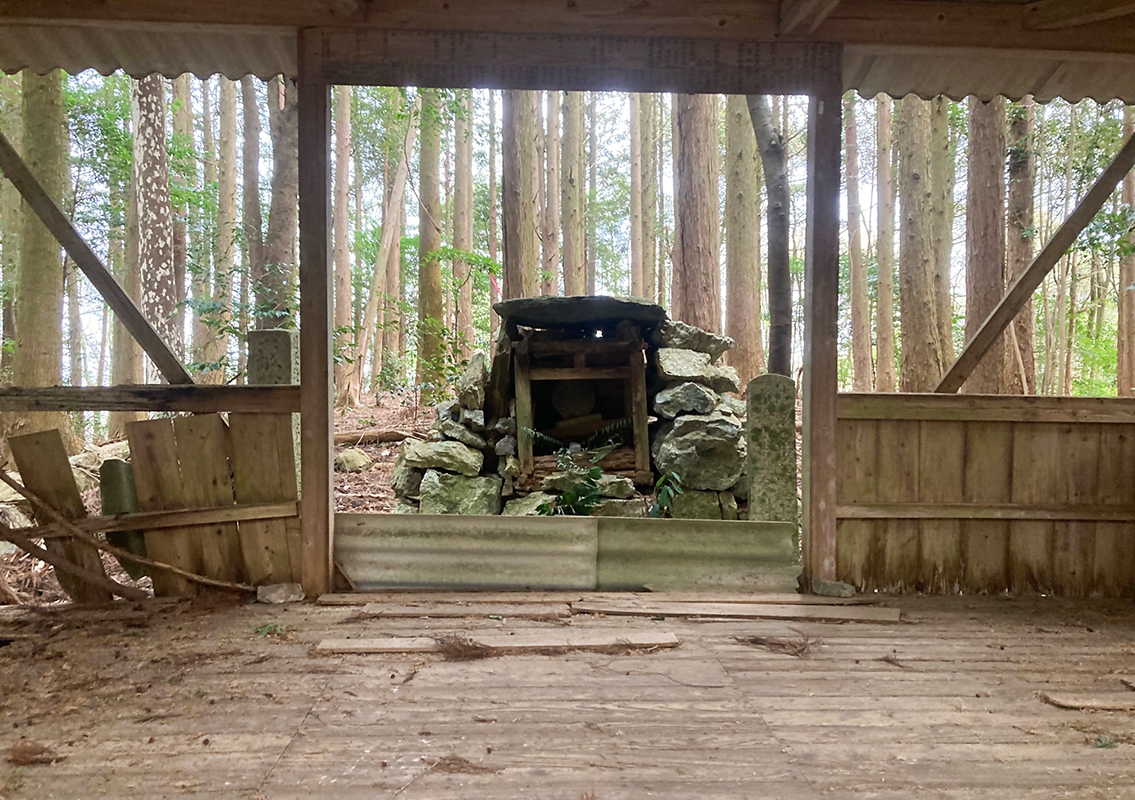 Nittensha
NittenshaAs you cross the Tosakatoge Pass and descend through the planted cedar forest, you will see a dilapidated shrine in the middle of the trees. This is Nittensha. The shrine has a small Hokora (small shrine) surrounded by natural stones, where Nitten Gatten is enshrined. It is said that ancient people worshiped the sun and moon as the most sacred elements in the world.
-
8
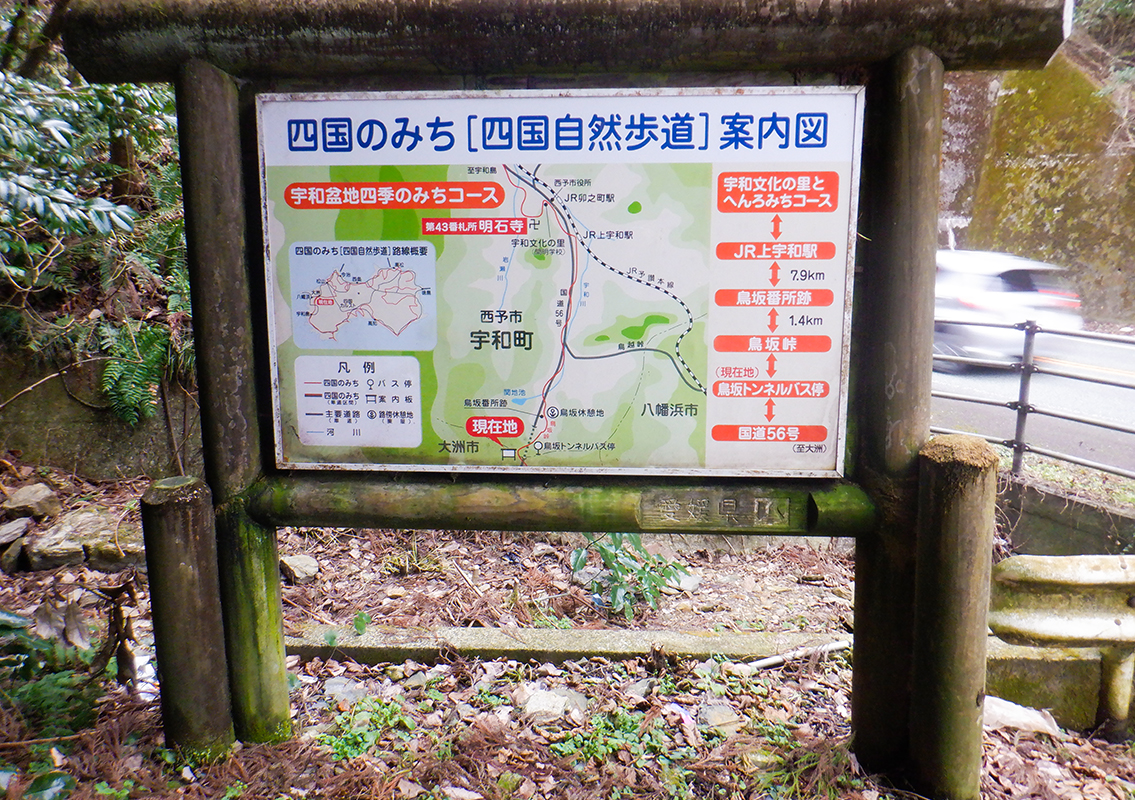 End point: Torisaka Tunnel Bus Stop
End point: Torisaka Tunnel Bus StopCross the mountain pass and come down to National Highway 56. You will be able to see the Ozu-side entrance of the Torisaka Tunnel. If you are heading in the opposite direction, this information board will serve as a landmark. From here, please proceed along the national highway for some time.



